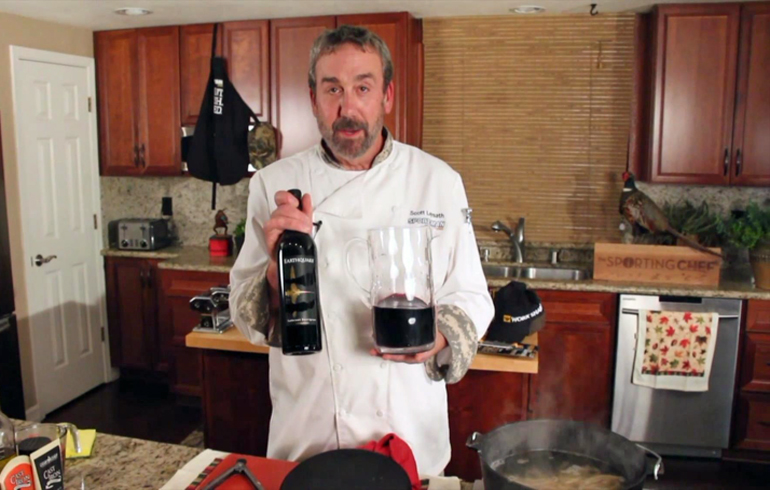Shanks for the Memories – How to Make Delicious Deer Shanks by Scott Leysath
You know, I’m just not getting through to some of you. In spite of me telling folks that the shanks are some of the best-eating parts of an antlered animal, as far as I can tell most people are still throwing them in the trash…or feeding them to their dogs.
I’m all for rewarding my dogs, but they feel equally rewarded with a good scratching or maybe a rawhide chew. For me, one of the best rewards is a slow-cooked deer shank bathed in a tasty sauce. Discarding venison shanks is about the same as throwing away bones and carcasses that could be used to make a stock that is infinitely more flavorful that something out of a can or a bouillon cube.
Preventing cookies from being stored on your device may interfere with your ability to view video content.
You can adjust your cookie setting by clicking the button below.
There are those of us who wouldn’t think of tossing out anything with protein or collagen that can be transformed into a soup stock or sauce. We use every part of an animal. I’m not an organ guy, but I do save them for my friends that like hearts, livers and gizzards. Others just save the “good” parts and either grind the rest or just throw it away. Many bird hunters remove the breast fillets and don’t bother to turn the rest of their birds into soups, stews and stocks. It’s just not right.

If you’ve ever tried to carve usable meat off the lower part of a deer leg, you know that you’ll end up with a small pile of sinewy meat and it’ll take you a while to get there. One of the magical parts of cooking shanks is that slow, moist heat does all the work. Very little knife work is involved other than chopping up some vegetables to add flavor to the stock. The process is simple, but it does take several hours. If, after braising for 3 to 4 hours, the shanks are still not fall-off-the-bone tender, make sure that there is at least an inch or so of liquid in the pot, put the lid back on and keep cooking. Some shanks are just a little tougher than others.

Venison Osso Buco
A classic dish of braised veal shanks that works wonderfully well with any antlered game. To prepare the shanks, cut a few inches below and six to eight inches above the knee joint. Once browned, this can also be prepared in a slow-cooker.
4 servings
4 venison shanks
1 teaspoon each salt and pepper
1/2 cup flour
2 tablespoons olive oil
2 cups carrots, diced
1 cup celery, diced
1 cup onion, diced
4 garlic cloves, minced
1 tablespoon Italian seasoning
1 cup dry red wine
1 cup canned Italian tomatoes, chopped
1 cup game or beef broth
- Season shanks liberally with salt and pepper. Dust with flour.
- Pre-heat oven to 325 degrees. Heat olive oil over medium-high heat in a large oven-safe pot (like a Dutch oven). Add shanks and brown evenly on all sides. More browning, but not burnt, equals more flavor. Add carrots, celery, onion, garlic and Italian seasoning and lightly brown. Add wine, cover with a tight-fitting lid or foil and place in the preheated oven for 2 hours. Check shanks for tenderness. If the meat does not pull away from the bone easily, recover and continue cooking for another hour or until shanks are tender.
- Add tomatoes and beef broth, increase heat to 375 and return to the oven, uncovered, until liquid is reduced by one-half.
- To serve, place one shank on each plate and spoon sauce over.
VIDEO – A similar version of braised venison shanks. Measuring ingredients not required or encouraged.




